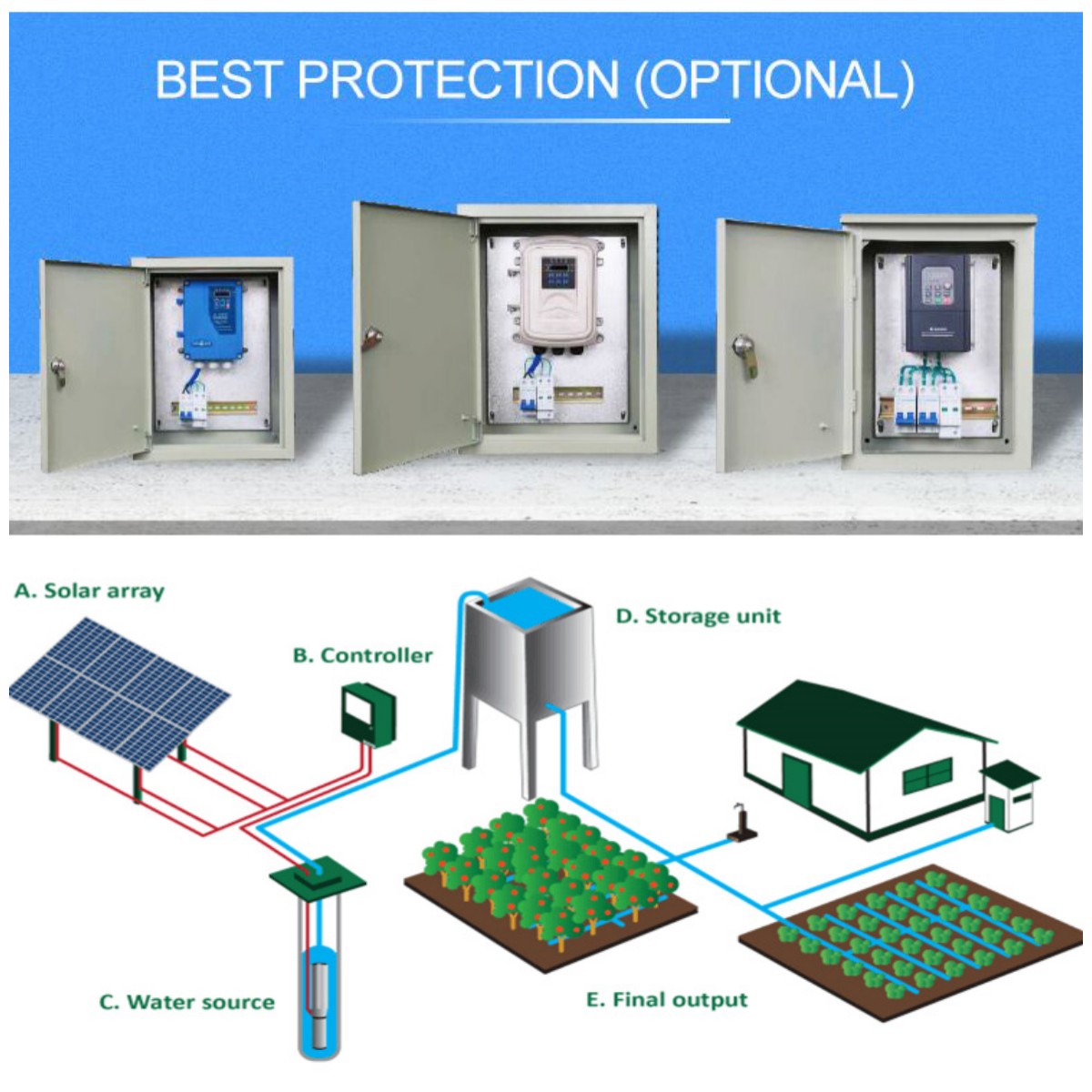Solar water pumps are growing in popularity as a sustainable and cost-effective way of delivering clean water to communities and farms. But how exactly do solar water pumps work?
Solar water pumps use the sun’s energy to pump water from underground sources or reservoirs to the surface. They consist of three main components: solar panels, pumps and controllers. Let’s take a closer look at each component and how they work together to provide a reliable water supply.
The most critical component of a solar water pump system is the solar panel. The panels are composed of photovoltaic cells that convert sunlight directly into electricity. When sunlight hits a solar panel, the photovoltaic cells generate direct current (DC), which is then sent to a controller, which regulates the current flow to the pump.
Pumps are actually responsible for moving water from the source to where it is needed. There are several different types of pumps available for solar water pumping systems, including centrifugal pumps and submersible pumps. These pumps are designed to be efficient and durable, allowing them to continue operating even in remote or harsh environments.
Finally, the controller acts as the brains of the operation. It ensures that the pump only operates when there is enough sunlight to power it efficiently, and also protects the pump from potential damage caused by over-pressure or over-current. Some controllers also include features such as remote monitoring and data logging, allowing users to track the performance of the system and make any necessary adjustments.
So, how do all these components work together to pump water using solar energy? The process begins with solar panels absorbing sunlight and converting it into electricity. This power is then sent to the controller, which determines whether there is enough power to run the pump. If conditions are favorable, the controller activates the pump, which then begins pumping water from the source and delivering it to its destination, whether it’s a storage tank, irrigation system or livestock trough. As long as there is enough sunlight to power the pump, it will continue to operate, providing a constant supply of water without the need for traditional fossil fuels or grid electricity.
There are several advantages to using a solar water pump system. First, they are environmentally friendly because they produce no greenhouse gas emissions and rely on renewable energy. Additionally, they are cost-effective as they can significantly reduce or eliminate electricity and fuel costs. Solar water pumps also require minimal maintenance and have a long lifespan, making them a reliable and sustainable water supply solution for remote or off-grid locations.
In short, the working principle of a solar water pump is to use the energy of the sun to pump water from underground sources or reservoirs to the surface. By utilizing solar panels, pumps and controllers, these systems provide a clean, reliable and cost-effective way to get water where it’s needed. As technology continues to advance, solar water pumps will play an increasingly important role in providing clean water to communities and agriculture around the world.
Post time: Feb-29-2024





